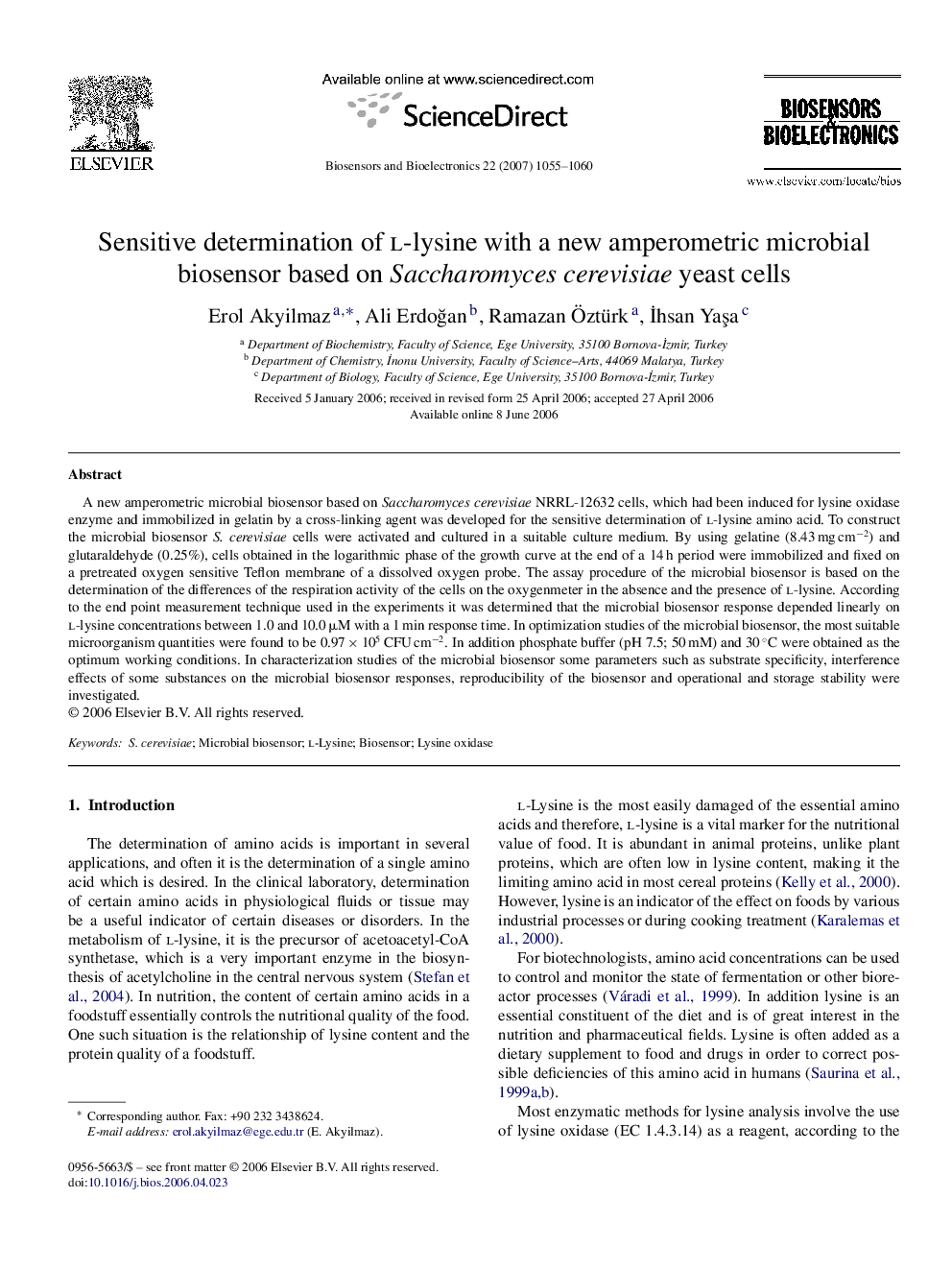| Article ID | Journal | Published Year | Pages | File Type |
|---|---|---|---|---|
| 869266 | Biosensors and Bioelectronics | 2007 | 6 Pages |
A new amperometric microbial biosensor based on Saccharomyces cerevisiae NRRL-12632 cells, which had been induced for lysine oxidase enzyme and immobilized in gelatin by a cross-linking agent was developed for the sensitive determination of l-lysine amino acid. To construct the microbial biosensor S. cerevisiae cells were activated and cultured in a suitable culture medium. By using gelatine (8.43 mg cm−2) and glutaraldehyde (0.25%), cells obtained in the logarithmic phase of the growth curve at the end of a 14 h period were immobilized and fixed on a pretreated oxygen sensitive Teflon membrane of a dissolved oxygen probe. The assay procedure of the microbial biosensor is based on the determination of the differences of the respiration activity of the cells on the oxygenmeter in the absence and the presence of l-lysine. According to the end point measurement technique used in the experiments it was determined that the microbial biosensor response depended linearly on l-lysine concentrations between 1.0 and 10.0 μM with a 1 min response time. In optimization studies of the microbial biosensor, the most suitable microorganism quantities were found to be 0.97 × 105 CFU cm−2. In addition phosphate buffer (pH 7.5; 50 mM) and 30 °C were obtained as the optimum working conditions. In characterization studies of the microbial biosensor some parameters such as substrate specificity, interference effects of some substances on the microbial biosensor responses, reproducibility of the biosensor and operational and storage stability were investigated.
